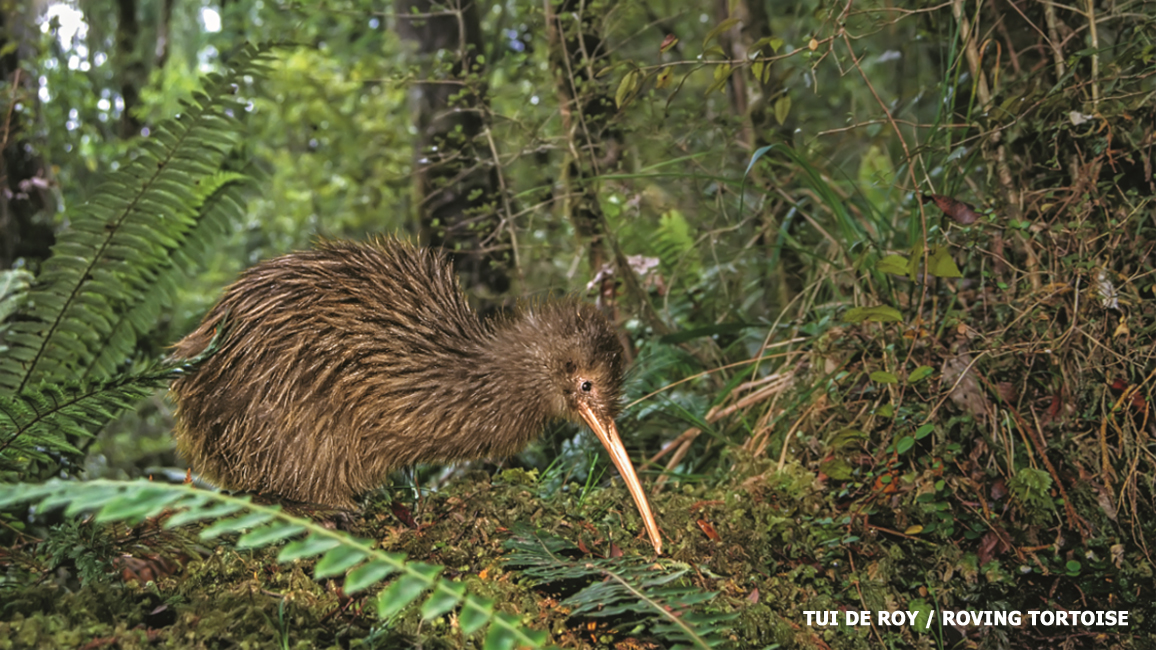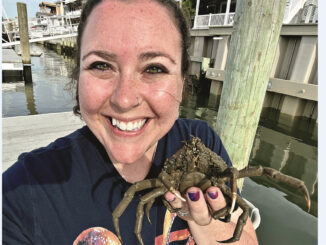
Project Kiwi
By Ellen Lambeth; Photos by Tui De Roy / Roving TortoiseWhat bird can’t fly, has hairy feathers, and lives only on the island nation of New Zealand? Read on!

You probably know that Australia is famous for its koalas and kangaroos. But did you know that New Zealand (Australia’s neighbor, see map) is famous for the odd bird above, called the kiwi (KEEwee)? In fact, the bird is the country’s national symbol. The people of New Zealand even call themselves Kiwis!
Kiwis (the birds) are related to ostriches and emus. Like those birds, kiwis have tiny wings that are useless for flight. And they have the same type of hair-like feathers (see circle). But unlike their large, long-necked, long-legged relatives, kiwis are small birds with short necks and legs—and no tails. Also unlike their relatives, kiwis are active at night. And, unlike any other bird in the whole world, a kiwi has nostrils at the tip—not the base—of its beak!

A kiwi has super sensors at the tip of its flexible beak, as well. Like a blind person tapping a cane to feel which way to go, a kiwi walks along while tapping its beak and poking it in the ground. That way, it can pick up the vibrations of worms, spiders, and other yummy treats moving around in the dirt or under leaves.
The kiwi’s strong sense of smell and the sensitive “whiskers” on its face help, too. Kiwis also have excellent hearing, but their small eyes don’t see well in the dark.
After a busy night of hanging out and snuffling around for food, kiwis usually sleep the day away in burrows they dig or other hiding spots.
KIWIS IN TROUBLE
Before humans moved into New Zealand and spread across the land, kiwis had little to fear. Some bird-eating hawks might’ve meant trouble, but living the night life pretty much solved that problem. When people came, though, they brought along other animals that didn’t naturally belong in New Zealand, including dogs, cats, and stoats (a kind of weasel). These animals found it easy to attack kiwis—especially the smaller, defenseless chicks. There are five species of kiwi, and now all of them are in danger of becoming extinct.
TO THE RESCUE!
The government, private groups, and people of New Zealand are all working hard to protect kiwis and their homes. They also want to help more kiwis live long enough to have chicks of their own. So, some very special people, nicknamed “Kiwi Rangers,” are here to help! They’re collecting eggs, bringing them into labs, and raising the chicks that hatch until they’re big and strong.

Each egg that grows inside a kiwi mom is huge compared to the size of the adult bird. Laying an egg that size is like your mom giving birth to a preschooler!
The egg also has an extra-large yolk that “feeds” the chick so well that it hatches out as a mini version of a grown-up kiwi. It won’t even need to eat for days after it hatches. Soon, it’s ready to head out of its burrow to fend for itself. But with all those unnatural predators out and about, most chicks won’t make it. One way to help is for some Kiwi Rangers to rescue them before they even hatch.
OPERATION NEST EGG
First, the rangers must find kiwi burrows with nests and then gather the eggs. Next, the rangers get the eggs back to a “hatching lab.” There, the eggs are kept in incubators—machines that keep them warm and moist. Once the chicks hatch, they’re moved to special indoor pens where they learn to feed themselves.
After a few weeks, the chicks are moved to outside areas that are safe from predators. If all goes well, the chicks will grow up to have some chicks of their own Meanwhile, rangers will keep working to remove stoats from New Zealand and to teach people to keep their dogs and cats under control.
When the new chicks become strong and healthy enough to protect themselves, Kiwi Rangers will return them to the wild places their ancestors came from. Home free!
















